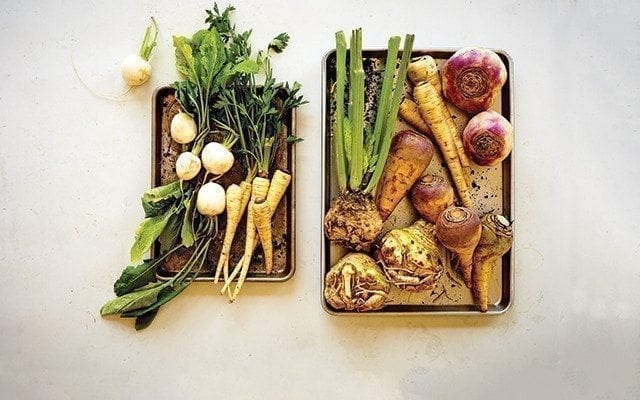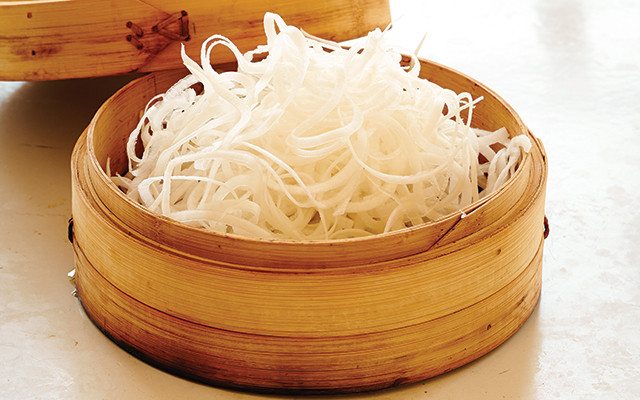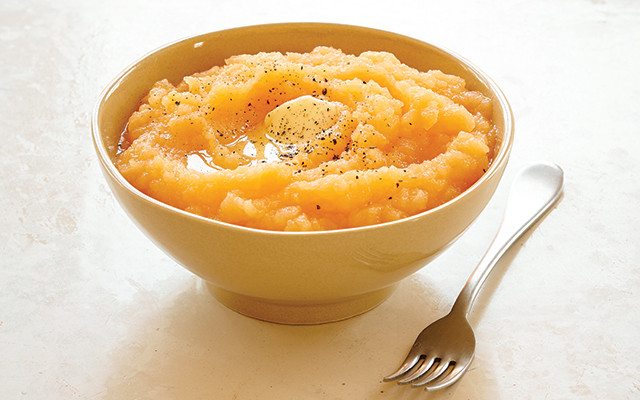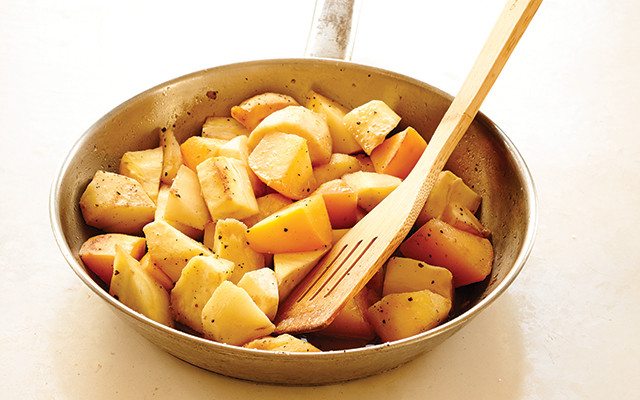Knotty, bumpy, and sometimes hairy, root vegetables aren’t going to win any beauty contests. But these earthy delights are bursting with intriguing flavors and loads of vitamins, minerals and phytonutrients.
Turnips, parsnips, rutabagas, celeriac and parsley root can be lovely and soulful when braised with meat. They are also sturdy enough to substitute for pasta and rice. And they can be prepared in diverse ways.
Root vegetables are good keepers and will store for weeks in the refrigerator, or even months in a root cellar. On top of all that, they’re cheap!
Here’s a guide to some of our favorite root veggies, as well as many creative ways to enjoy them.
Nutritional Know-How
- Root vegetables are high in fiber, which helps reduce excess serum cholesterol. Parsnips contain nearly double the amount of fiber found in carrots.
- Rich in a range of vitamins—especially vitamins A, C, and K—root vegetables also contain a host of minerals drawn from the soil, including potassium, calcium, iron, iodine and phosphorus.
- Root veggies are antioxidant powerhouses. Turnips, for example, contain antioxidants in the form of sulfuric compounds called glucosinolates.
- Some root veggies have a high glycemic index—parsnips, in particular—and should be eaten in moderation to avoid blood-sugar spikes. Adding fats like butter, olive oil, and coconut oil helps reduce glycemic load.
Shopping and Storage Tips
- Look for small to medium-size root vegetables that are firm. Avoid ones with “whiskers” or brown patches.
- If you buy root veggies that still have green tops, remove them before storing (you can freeze them for stock if you like) because they draw moisture from the roots.
- Root vegetables store well in perforated bags in the refrigerator. Turnips and parsley root will keep for about a week, rutabagas for two weeks, and celeriac and parsnips for two to three weeks. Lucky enough to have a root cellar? You can store the veggies for months.
Kitchen Tricks
- No need to peel small, tender parsnips, turnips, and parsley root, but older veggies have tough skins that should be removed. Larger parsnips might also have a fibrous core that needs to be cut away.
- Rutabagas are often sold with a wax coating to maintain moisture. It usually comes off easily with a peeler. The rutabaga flesh is quite hard, so it works well to slice them thinly before cooking.
- Some root veggies turn brown when exposed to air after cutting. Put them in a bowl of water with some lemon juice if you can’t cook them right away.
- To temper the strong flavor of turnips and celeriac, blanch in boiling water for a few minutes before cooking.
5 Easy Ways to Use Root Veggies
Thinly slice parsnips, parsley root or celeriac on a mandoline, soak in salted water, and pat dry. Toss lightly with olive or avocado oil, and season with salt and pepper. Bake in oven at 400 degrees F until crisp.
Whether they’re diced, sliced into oven fries or cut into big chunks, root vegetables roast beautifully. Toss with extra-virgin olive oil, salt and pepper, and roast at 400 to 450 degrees F until golden. Or add them to the pan when roasting chicken, pork, beef or lamb.
Make root-veggie “noodles” by using a vegetable peeler to create thin ribbons. Steam, then toss with extra-virgin olive oil and chopped herbs.
As an alternative to mashed potatoes, steam root veggies and then either mash by hand or puree in a food processor. Season with butter, salt, pepper and some herbs. You may need to add a bit of vegetable or chicken stock to loosen the mash (unsweetened nut or seed milks, such as hemp milk, work well, too).
Saute chopped root veggies in extra-virgin olive oil until slightly caramelized, then add liquid (such as vegetable broth) and simmer until veggies are tender. Finally, turn up the heat to reduce the braising liquid to a slightly thickened sauce.
Get tasty recipes that use root vegetables.
All photos courtesy of Experience Life.









